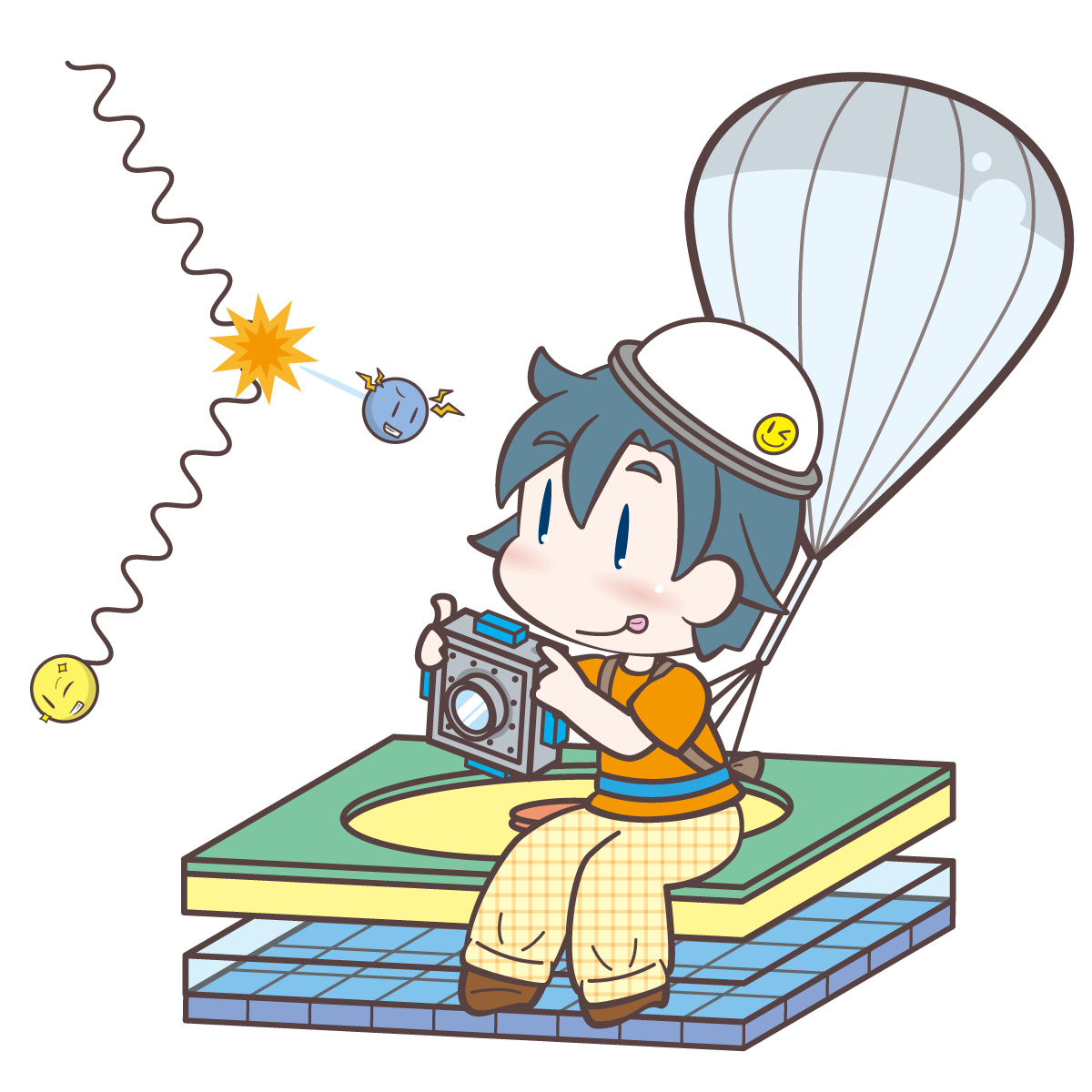MeV gamma-ray telescope : Electron-Tracking Compton Camera
 The focusing of MeV gamma rays based on reflection is very difficult due to their short wavelength.
The focusing of MeV gamma rays based on reflection is very difficult due to their short wavelength.
Therefore, some tricks are needed to draw an image of MeV gamma-rays.
For the detection of MeV gamma-ray photons, which are the neutral particles, we must measure the interaction between gamma-rays and materials.
Because the most significant interaction in the MeV region is a Compton scattering, which is an elastic scattering between an electron and a gamma-ray,
the utilizing Compton scattering is the key to realize a high-efficiency camera.
Our MeV gamma-ray telescope, "electron-tracking Compton camera (ETCC)", consists of a gaseous electron tracker and the surrounding position sensitive scintillators.
When a gamma ray incident to this camera, the gamma ray makes a Compton scattering in the gaseous electron tracker.
This electron tracker detects the scattering direction and energy of the Compton-recoil electron,
and the scintillation camera detects the absorption point and energy of the Compton-scattered gamma-ray.
By the summing of the momenta of the scattered gamma-ray and the recoil electron, we can obtain the incident direction and energy of the initial gamma-ray.
In addition, the recoil direction of Compton-recoil electron have anisotropy.
It prone to be scattered in the perpendicular direction of the gamma-rays' electric field.
We can observe the polarization of MeV gamma-rays using this feature.
Each gamma ray photon has information of energy, direction, arrival time, and polarization.
All of the information is very important for the understanding of physics in the celestial objects.
Our ETCC is a unique detector because an ETCC can detect all information of gamma rays at the same time.
Background-rejection ability
Prototype detectors
Micro Pixel Chamber (μ-PIC)
 We are developing a micro pixel chamber (μ-PIC) based on the print circuit board technology.
We are developing a micro pixel chamber (μ-PIC) based on the print circuit board technology.
The gaseous electron tracker is a key technology for the ETCCs which is one of the application of this μ-PIC.
A μ-PIC has a pixel structure as like the sliced proportional counters, and the pixel electrodes are placed in the same plane.
When we supply a high voltage at the anode, there is a strong electric field around the electrode.
If a seed electron drifts to μ-PIC, the electron is accelerated by the strong electric field around the anode.
An accelerated electron makes some new ion-electron pairs by the collisions with gas molecules.
By the repeat of acceleration and ion-electron pair production,
a μ-PIC gets a high gas gain, and it can obtain a electrical signal as an incidence of radiation.
A μ-PIC inherit the high position resolution and the high counting rate capability which are the specifications of micro strip gas chamber, a pioneer of micro pattern gas detectors.
Additionally, a μ-PIC has a resistance for discharges and a scalability for a large area.
This μ-PIC is used in not only MeV gamma-ray telescope, but also neutron imaging detector and dark-matter search project.
Development of μ-PIC
Gaseous electron tracker
Scintillation camera
The energy and angular resolution of ETCC depends on the performance of scintillation camera strongly.
The development of scintillation camera is necessary for maximuze the perforamnce of ETCC.
We are also developing a scintillation camera for our ETCC.


